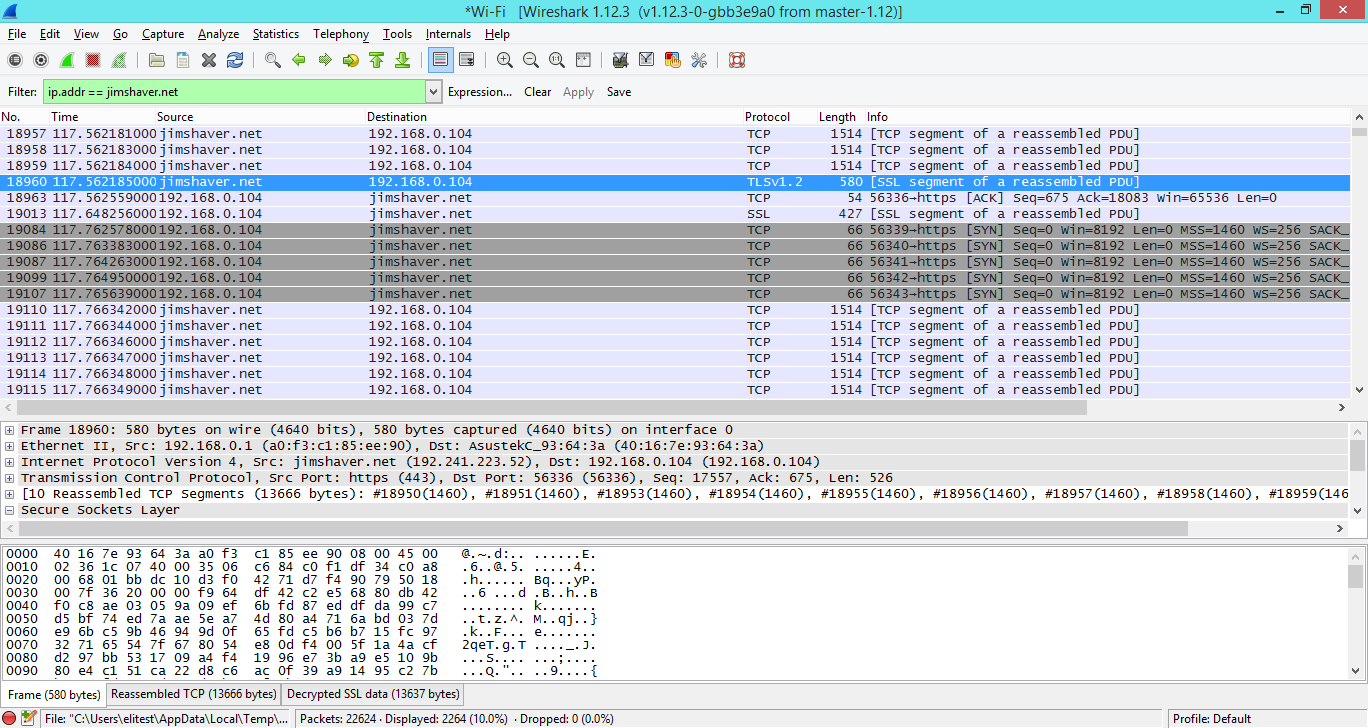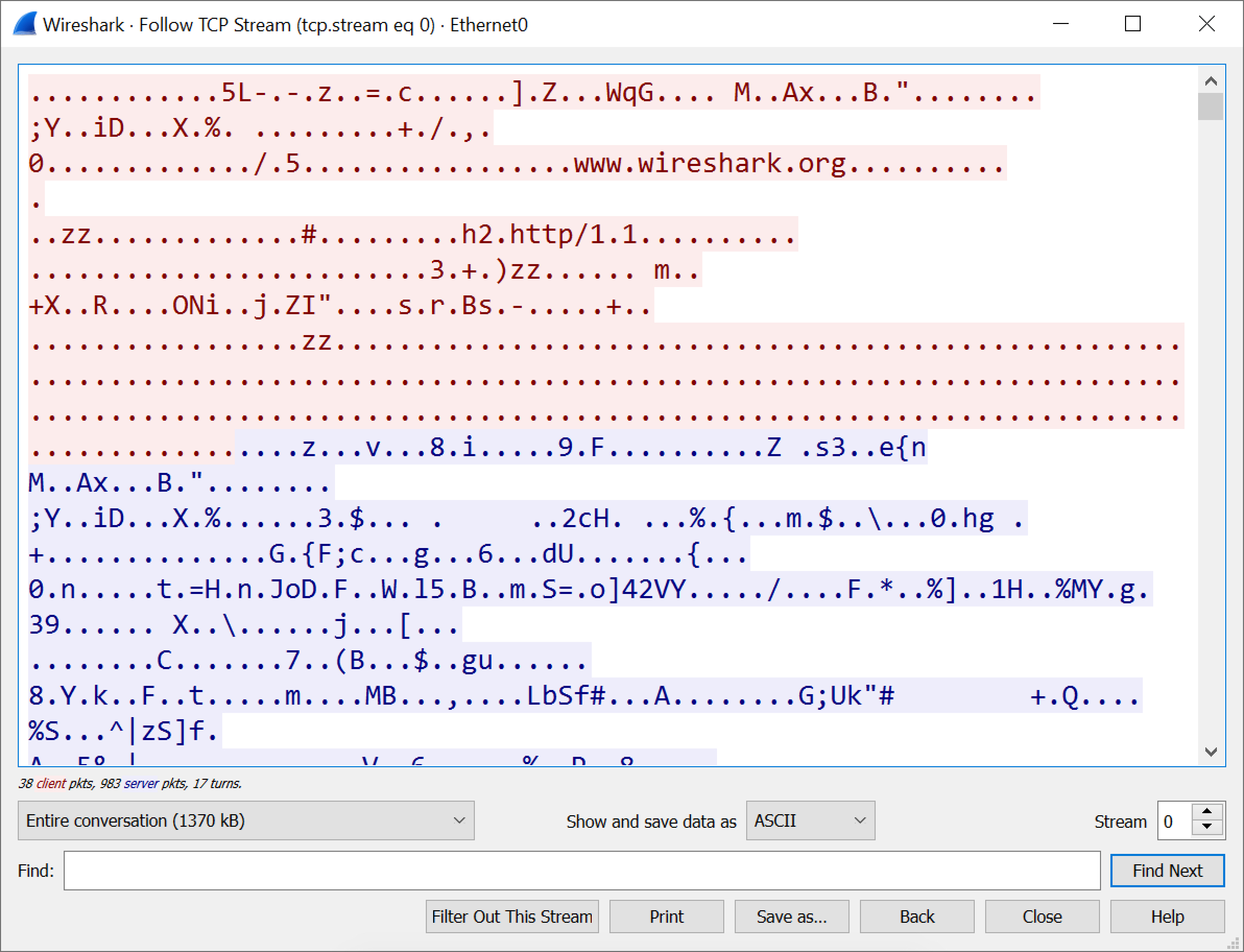

The Decrypted PKCS#8 PEM format (RSA) key must be similar to the following image:

Pem.key is the file name and path to the PEM key file output Openssl pkcs8 -nocrypt -in der.key -informat DER -out pem.key -outformat PEMĭer.key is the file name and path to the DER key file For example, converting a PKCS#8 DER key to a decrypted PKCS#8 PEM format (RSA) key, at the $prompt enter the following command:

If it is in binary, then it is likely to be in a DER format, which cannot be used with Wireshark. You can open and look inside your key file. The private key has to be in a decrypted PKCS#8 PEM format (RSA)format. This protocol is used to negotiate the secure. The TLS Handshake Protocol is one of the defined higher-level clients of the TLS Record Protocol. Wireshark can decrypt SSL traffic provided that you have the private key. When you tell Wireshark to do SSL decryption (by using the private key of the server), the message would have been decrypted and you would see that it is indeed one of the listed handshake messages. The following screenshot shows the TLS records.Decrypt the SSL traffic now (decrypted SSL must be similar to the following screenshot). There is just enough information in the decrypted plaintext stream to help reconstruct the contents. Unsniff maps each decrypted TLS application data record into an IP packet and adds the required 3-way handshake and RST packets to build a fairly accurate representation. In short, we are trying to take a record based protocol and fragment it into IP datagrams. It is impossible to derive a plaintext stream out of a TLS encrypted connection and still maintain a strong correlation with the original link layer packets. The IP packet in the above screenshot is 7053 bytes long.

Expand Protocols -> SSL, set (Pre)-Master-Secret log filename to the same text file. Locate the TLS section and set the "Analyzer Upper Layers" to TrueĬlick on the Import from TCPDUMP icon 4. In Wireshark, go to: Edit -> Preferences. Select Edit > Preferences > Protocols > SSL > RSA Keys list > Edit, to decrypt the trace (using the private key) in Wireshark. Enable "Analyze Upper Layers of TLS" option Use the private key to decrypt live or captured traffic.Įnter the Server IP and Port and specify the private key file 2. Let us look at how you can export the plain text into libpcap format.įor more details check out this article 1. You can then fire up Wireshark to examine the plaintext pcap file. Unsniff allows you to copy the plain text TCP streams and paste them as libpcap files. If you want to use Wireshark, you need a libpcap format file.The USNF file format stores the decrypted result and you do not need the key anymore. The server admin now leaves the room and takes the key with him.You were able to decrypt the traffic you wanted.You got the server admin to enter the private key After Wireshark starts capturing, put filter as ssl so that only SSL packets are filtered in Wireshark.In this article we look at a common problem many network analysts face when dealing with SSL/TLS decryption. Welcome the the first article in the new Unsniff Network Analyzer Tips section. Export plain text pcap after SSL/TLS decryption


 0 kommentar(er)
0 kommentar(er)
